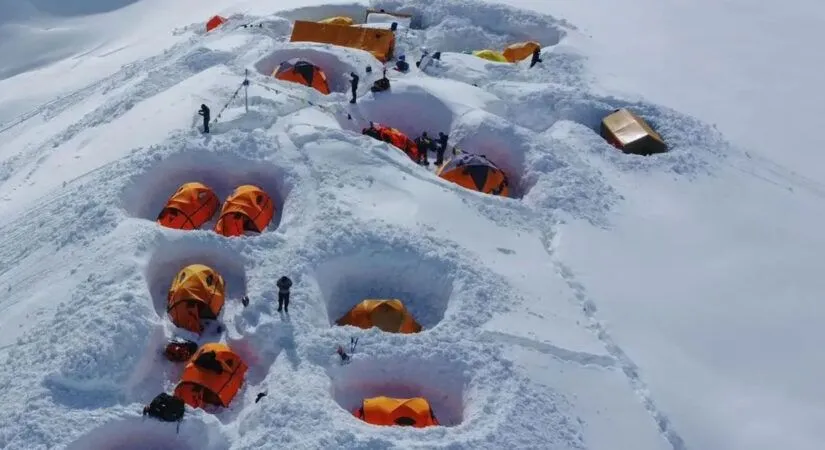
Peak Climbing
The Home of the Himalayas!
Eight out of the 10 highest peaks in the world are in Nepal: Mount Everest – 8,848.86m, Mount Kanchenjunga – 8,598m , Mount Lhotse – 8,516m , Mount Makalu – 8,485m, Mount Cho Oyu – 8,188m, Mount Dhaulagiri I – 8,167m, Mount Manaslu – 8,163m, and Mount Annapurna I – 8,091m.
There are treks available from a single day to months to complete. The trekkers can experience rich art, culture, and architecture in the urban areas while in the villages they view magnificent natural beauty (flora and fauna) and the traditions and hospitality of the ethnic people. The Home of the Himalaya
Since 1978, peak climbing in Nepal has become more popular than ever.
Some experts believe that peaks under 7,000 meters in height can be climbed without any prior rope or crampon climbing experience. Hence, the idea of trekking peaks has become so popular, because many of the peaks are not so extremely high.
All trekking peaks and mountains in Nepal over 5,000 meters require a permit to climb.
Nepal is a geographically gifted land for adventure journeys.
Peak climbing is one of the adventure activities available in Nepal. In Nepal, there are thousands of mountain peaks covered with snow at an altitude (elevation) of 6000 m and above. Nepal is identified with more than one thousand Himalayan peaks over 6000m including 8 out of 14 highest peaks in the world. These peaks are meant as a destination for millions of climbers and mountaineers across the globe. At present, there are some 326 peaks available for ascending and mountaineering in Nepal.
Peak climbing is a physically, mentally, and technically rugged activity which requires immense climbing skills. Peak climbing is done below eight thousand-meter-high mountains, where acclimatization is easier, and more attempts can be devoted to climbing skills rather than manual force to combat altitude.
The permission is granted by the Nepal Mountaineering Association (NMA) to climb peaks in Nepal which has been given the authority by the Mountaineering Section of the Ministry of Culture, Tourism and Civil Aviation (MoCTCA) to issue peak climbing permits.
Peak climbing requires several contemplations before one can embark on an actual climbing activity. Some rules and restrictions are imposed by the government regulating peak climbing activities due to economic, safety, environmental, and cultural concerns.
Trekkers and mountaineers have to know where to go, when to go, with whom to go, and what to take with them.
Tharpu Chuli, also known as Tent Peak, stands at an elevation of 5,663 meters (18,575 feet) and is situated south of the Annapurna Base Camp....